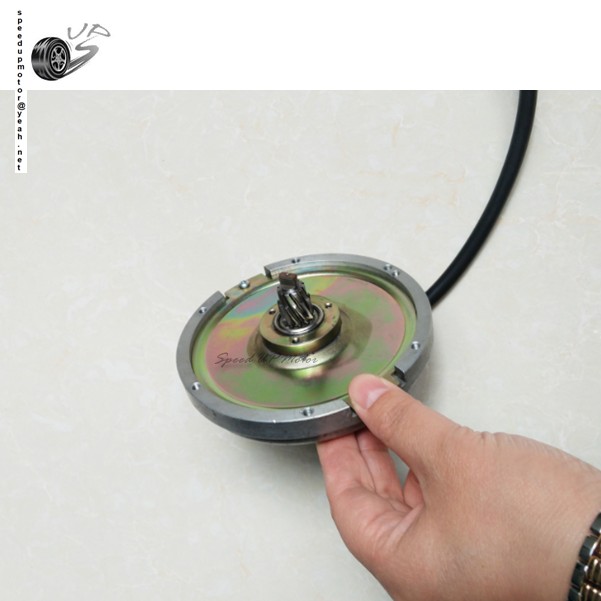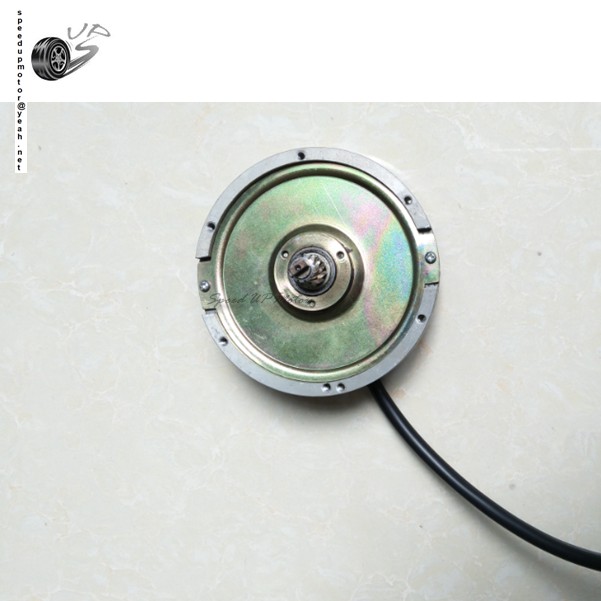- This topic is empty.
-
AuthorPosts
-
2025-04-16 at 6:25 pm #3420
The advancement of robotics has necessitated the use of efficient and reliable motors that can meet the performance requirements of various applications. Among the many motor types available, the 18V Brushed DC Pancake Armature Motor stands out due to its compact design, high torque, and cost-effectiveness. This motor type is widely used in robotic systems where space constraints, weight considerations, and power efficiency are key factors.
This article explores the application of the 18V Brushed DC Pancake Armature Motor in robotics, covering its working principle, advantages, and specific use cases in robotic applications.
Understanding Brushed DC Pancake Armature Motors
What is a Pancake Armature Motor?
A pancake armature motor is a type of brushed DC motor that features a flat and disc-like armature design, making it significantly thinner than conventional cylindrical motors. This design allows it to generate high torque while maintaining a compact profile.
How Does It Work?
The 18V brushed DC pancake motor operates on the principle of electromagnetic induction. When an electrical current flows through the motor's windings, it generates a magnetic field that interacts with permanent magnets, causing the rotor to spin. The brushed commutation system ensures that current flows through the correct coils to maintain continuous rotation.

Key Features of 18V Brushed DC Pancake Armature Motors
-
Compact and lightweight design
-
High torque output relative to size
-
Smooth and reliable operation
-
Cost-effective compared to brushless alternatives
-
Simple control mechanism
Why Use an 18V Brushed DC Pancake Motor in Robotics?
1. Space Efficiency in Robotic Systems
Robotic applications often have strict space constraints. The flat and compact design of a pancake motor allows engineers to integrate it into robotic arms, mobile platforms, and other space-limited components without compromising performance.
2. High Torque for Load Handling
Despite its small size, the 18V pancake motor delivers high torque, making it ideal for applications requiring strong rotational force, such as robotic grippers and actuators.
3. Energy Efficiency and Battery Compatibility
Many robotic systems are powered by battery packs. The 18V operating voltage aligns well with standard battery configurations, ensuring optimal power consumption while delivering efficient performance.
4. Cost-Effectiveness and Simplicity
Brushed DC motors are generally more affordable than brushless alternatives. Additionally, their simple control mechanism (using direct voltage adjustments or PWM speed control) makes them easier to integrate into robotics without complex electronic controllers.
Applications in Robotics
1. Robotic Arm Joints and Actuators
Pancake armature motors are commonly used in robotic arms where space-saving, precise motion, and torque are essential. Their thin profile allows for seamless integration into joints, enabling smooth movement and controlled positioning.
2. Mobile Robotic Platforms
In autonomous mobile robots (AMRs) and wheeled robots, pancake motors can be used to drive wheels efficiently while maintaining a low center of gravity. Their high torque ensures effective movement even when carrying heavy payloads.
3. Humanoid and Prosthetic Robotics
For humanoid robots and prosthetic limbs, the lightweight nature and torque efficiency of these motors make them suitable for replicating human-like motion and dexterous movements.
4. Exoskeletons and Wearable Robotics
Exoskeletons require compact and high-torque motors to provide motion assistance while maintaining a low weight. The 18V pancake motor is an excellent choice due to its size-to-power ratio.
5. Precision Automation and Industrial Robots
In industrial automation, pancake motors power robotic arms and conveyor systems where controlled torque and compact size are crucial.

Considerations for Using 18V Brushed DC Pancake Motors in Robotics
1. Brush Wear and Maintenance
Since these motors use carbon brushes, wear and tear is a concern over extended usage. Regular maintenance or replacement is necessary for long-term reliability.
2. Heat Dissipation
Due to their compact design, pancake motors may generate heat during continuous operation. Adequate cooling or ventilation should be considered in high-load applications.
3. Speed Control and Feedback Integration
For precise robotic applications, encoders can be integrated with the motor to provide real-time speed and position feedback, enhancing accuracy and efficiency.
Conclusion
The 18V Brushed DC Pancake Armature Motor is a valuable component in robotic systems due to its compact design, high torque, and energy efficiency. Whether in robotic arms, mobile platforms, or exoskeletons, this motor type offers a practical solution for engineers looking to optimize space and performance in robotics.
By considering brush wear, heat dissipation, and control mechanisms, designers can maximize the lifespan and efficiency of these motors in their robotic applications. As robotics continues to evolve, the pancake armature motor will remain a key technology for developing compact, high-performance robotic solutions.
Understanding the 18V Brushed DC Pancake Armature Motor: Features and Applications
http://www.upsmotor.com
Wuxi Speedup Power Co.,Ltd. -
-
AuthorPosts
- You must be logged in to reply to this topic.